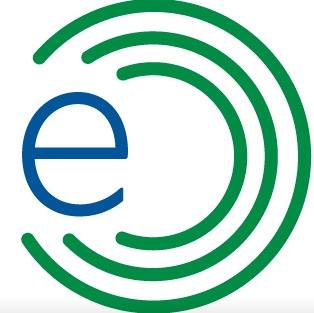What’s the Difference Between a Blog and a Vlog
When I started diving into the digital content creation pool, I quickly learned the differences between two big waves: blogs and vlogs. A blog, to put it simply, is a platform where I share my thoughts, experiences, and knowledge primarily through text. It’s all about writing and still images, often sprinkled with multimedia elements to enhance the storytelling. I think of it as my online journal or column, where readers come to read what I have to say.

Let’s learn the difference between a Blog and a Vlog!

On the flip side, when I’m in the mood for showing rather than telling, that’s where my vlog comes into play. Vlogging is blogging in video form. It’s a more dynamic way of sharing content, where instead of writing down my stories, I record myself speaking directly to my audience. A vlog has the intimacy of a blog post but uses a visual and auditory format that can feel more immediate and personal.
Defining Blog and Vlog
Diving straight into the digital ocean of content, I’m going to break down the ‘what’ of blogs and vlogs. These platforms are where creativity meets technology, and understanding them is like getting a VIP pass to the show.
What Is a Blog?
A blog is my online journal or informational website. It’s where I engage with readers through text-based articles. Presenting content in a conversational style, I typically include images to enrich the narrative. WordPress is one of my go-to platforms for blogging; it’s like the canvas where I paint my words.
Key Characteristics of a Blog:
- Content: Primarily written articles, sometimes supplemented with images
- Platform: Often hosted on sites like WordPress
What Is a Vlog?
Conversely, a vlog is where I become a visual storyteller. It stands for ‘video blog’, and as the name suggests, it’s all about video content. Vlogs are my method for sharing personal experiences or information directly through video. YouTube, as well as other video-sharing platforms, are the stages where I perform, figuratively speaking.
Key Characteristics of a Vlog:
- Content: Video-based, engaging viewers through a visual medium
- Platform: Typically shared on video-sharing platforms like YouTube
In both blogs and vlogs, storytelling is my priority, but the medium I choose determines how the story is told.
Content Creation and Presentation

Creating engaging content for a blog or vlog demands consideration of formats and mediums I’ll use to connect with my audience. Whether I’m writing detailed posts or producing dynamic videos, understanding the essentials of each approach is crucial for effective presentation.
Blogging Essentials
When I dive into blogging, my main tools are words and images. My content is typically presented in written form, employing robust SEO practices to ensure that it’s discoverable by search engines. To enhance the reader’s experience, I focus on:
- Formatting: Using headings, bullet points, and bold text to make articles easy to scan.
- Multimedia Elements: Incorporating graphics and photos to illustrate my points.
- Platform: Selecting the right blogging platform that offers customizable templates and user-friendly interfaces.
In blogging, my writing skills are paramount, but I also need to grasp the basics of HTML and CSS if I want to tweak my site’s design. Plus, understanding how to optimize my content with keywords is a necessary skill to reach a wider audience.
Vlogging Equipment and Skills
Switching gears to vlogging, I’m engaging my audience through videos which means my presence on camera and video editing skills are front and center. Here’s a breakdown of what’s essential:
- Camera: Even a smartphone can work, but DSLRs or mirrorless cameras are top choices for higher quality.
- Equipment: This includes tripods, lighting, and microphones for clear audio.
In terms of skills, I need to be confident in:
- Video Editing: Crafting a narrative flow, trimming unnecessary footage, and adding effects.
- Visuals: Ensuring each shot is well-composed and appealing to keep viewers watching.
- Graphics: Often, I’ll need graphic overlays or intro screens, which require some design ability.
Ultimately, whether I’m blogging or vlogging, the aim is to keep my content engaging, informative, and tailored to the platform I’m using, which dictates the type of content creation tools and skills I need to excel.
Engagement and Audience Interaction
When I talk about blogs and vlogs, I focus on two wildly different ways to connect with folks out there. Whether through written words or dynamic videos, these platforms have their unique vibes for engaging an audience.
Blog Posts and Reader Engagement
I’ve noticed that with my blog posts, the engagement tends to be more reflective. Readers might leave comments sharing their thoughts or experiences related to the topic. The connection’s mostly through text, which means people can take their time, think it over, and come back with well-thought-out responses. I get a real kick out of seeing someone dive deep into the discussion. Here’s how engagement usually pans out:
- Comments: Readers leave their insights, often resulting in a threaded conversation.
- Social Sharing: If they dig what I’ve written, they might share the post on social media, which amplifies traffic and engagement.
- Email Replies: Sometimes, the conversation moves to email, where things get a tad more personal.
Blog readers tend to be seekers of in-depth information, and I love offering them a slice of my world through words. The written format allows me to share detailed opinions and expertise at a comfortable pace, welcoming a following that’s into lengthy reads.
Vlog Posts and Audience Connectivity
On the flip side, my vlogs are all about that instant connection. Once I hit publish, the video format lets me communicate with my audience in real-time — facial expressions, tone of voice, the works. Here’s what audience interaction looks like in the vlogosphere:
- Real-time Comments: Viewers hit me up with comments while they’re watching, which feels like we’re having a live chat.
- Likes and Shares: Each thumbs-up and share is like a high-five, telling me they’re vibing with the content.
- Subscriber Numbers: Quick feedback comes not just through comments but also in how rapidly my subscriber count goes up (or down, but let’s not jinx it).
Vlogs reel in an audience that’s looking for an immersive experience. They’re tuning in for a glimpse of my day-to-day or to learn something new while they’re on the go. It’s a faster-paced engagement where emotions and experiences come through much more viscerally.
Monetization and Building a Brand
When I think about turning a blog or vlog into a thriving brand, I focus on the specific strategies that are going to make money and solidify your brand’s presence in your chosen niche.
Making Money through Blogging
Blogging can be a lucrative venture if I do it right. Monetization through blogging usually involves multiple streams of income. First, there’s Google AdSense, which allows me to make money through ads displayed on my blog. It’s all about getting enough traffic; more visitors mean more ad income. Next up is affiliate marketing; I can promote products related to my niche and earn a commission for every sale made through my affiliate link. Additionally, I can diversify my revenue with sponsorships, where companies pay me to discuss their products, and direct sales, such as eBooks or courses. And let’s not forget web hosting deals—showcasing my recommended hosts can earn me some neat referral bonuses.
- Google AdSense: Income from ads
- Affiliate Marketing: Commissions on sales
- Sponsorships: Paid product features
- Sales: eBooks or courses
Monetizing Vlogs
With vlogs, YouTube is often the go-to platform. Making money on YouTube starts with creating high-quality, engaging videos that draw in viewers. Monetizing my YouTube channel through ads via the YouTube Partner Program needs a substantial number of views and subscribers; this is where producing content that resonates with my audience is critical. Besides ad revenue, I can leverage affiliate marketing here too. Additionally, platforms like TikTok have introduced their own monetization features, such as virtual gifts and subscriptions, which can be a gold mine for vloggers with a strong following in their niches.
- YouTube Partner: Ad revenue from views
- Affiliate Marketing: Earn from product recommendations
- TikTok: Monetize with gifts and subscriptions
Which One Is Right for Your Brand?
Choosing between blogging and vlogging for my brand comes down to a few key factors. The nature of my brand’s products or services, my target audience’s preferences, and my own comfort level with different types of content creation play pivotal roles. For instance, if I’m dealing with a topic that requires visual demonstrations, such as a fitness regimen or an electronics review, vlogging might be more effective. Conversely, for more informative, search-friendly content, blogging could be my sweet spot, especially with search engine optimization strategies to increase searching visibility. Regardless of the path I take, consistency and a well-planned content strategy are vital for building a trusted online brand that can make money.
- Evaluate the nature of products or services
- Consider audience preferences
- Determine my content creation strengths






